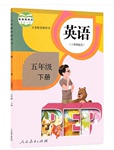题目内容
In the 1920s and 30s the airlines were just beginning. It was unusual for people to travel by air because it was expensive and dangerous. In those days, there were no flight attendants to look after the passengers(乘客). Young men ,or “stewards” helped the passengers onto the airplane and carried the passengers’ luggage(行李)but they did not provide food or drinks. But then in 1930,a woman called Ellen Church invented the “stewardess”.
Ellen Church was born in 1904 on a farm in Iowa. She was a different child. She didn’t want to work on a farm or marry a farmer —she wanted a more adventurous life. Ellen studied to be a nurse at the University of Minnesota and then got a job in a hospital. For the next few years she stayed at the hospital but also took flying lessons and got her pilot’s license.
Ellen was twenty-five years old when she first got in touch with Boeing Air Transport. She loved flying but she understood that airlines were a man’s world. Although women like Emelia Earheart were becoming famous, she realized it was impossible for a woman to have a career as a pilot .But she had another idea. Most people were frightened of flying because. flying was still an unreliable(不可靠的) way to travel. There were often delays(延误),many crashes and the bad weathers made many passengers sick. Ellen thought nurses could take care of passengers during flights and B.A.T. agreed.
The young woman from Iowa and seven other nurses became the first air stewardesses.
At first pilots were unhappy because they did not want stewardesses on airplanes, but passengers loved the stewardesses. In 1940 there were around 1000 of them working for different airlines. The early “stewardesses” had to be under twenty-five-year-old, single and slim. When a woman joined an airline, she had to promise not to get married or have children. It was a hard job and not well paid. They worked long hours and earned $1 an hour.
In the 1970s, stewardesses were unhappy in their job and airlines had to make some changes. Since the 1970s, “stewardesses” have been called flight attendants. They are well paid and work fewer hours than in the past.
1.The underlined word “adventurous” means _____________.
A. 奇怪的?????? B. 平淡的????? C. 有趣的????? D. 冒险的
2.The main reason for Boeing Air Transport offering Ellen the job was ________.
A. her flying experience????????????? ????????????? ????????????? B. her university education
C. her nursing experience ????????????? ????????????? D. her life attitudes
3.According to the passage, in the 1940s a woman had to ________ if she wanted to be a stewardess.
A. be a nurse????????????? ????????????? ????????????? B. be married????????????? ????????????? C. be a mother????????????? ????????????? ????????????? D. be young
4.The passage mainly talks about _______.
A. the background of early flying pilots????????????? ?????????????
B. the experience of flying passengers
C. the history of early flight attendants????????????? ?????????????
D. the development of airplanes????????????? ?????????????
1.D
2.C
3.D
4.C
【解析】
试题分析:短文大意:这篇短文主要讲述了早期的飞行人员——空姐的由来。
1.词义猜测题。联系前一句She didn’t want to work on a farm or marry a farmer 可知她想要一种冒险的生活。故选D。
2.细节理解题。根据Ellen thought nurses could take care of passengers during flights and B.A.T. agreed.描述,可知波音公司接受她是因为她能在航行期间照顾乘客。故选C。
3.细节理解题。根据短文倒数第二段The early “stewardesses” had to be under twenty-five-year-old, single and slim. 描述,可知早期的空姐年龄要求在25岁以下,未婚,身材苗条。故选D,年轻的。
4.主旨大意题。阅读短文可知,本文主要介绍了早期的飞行人员——空姐的来历。故选C。
考点:考查历史类阅读

 开心快乐假期作业暑假作业西安出版社系列答案
开心快乐假期作业暑假作业西安出版社系列答案 名题训练系列答案
名题训练系列答案 期末集结号系列答案
期末集结号系列答案| 阅读理解。 | ||||||||||||||||||||
| An index (索引) is usually at the end of a hook. It tells us most of the topics the writer talks about in the book. The topics are usually listed from letter A to letter Z. Under each topic, there are some small topics, and we can find the page number after each small topic. Here is part of an index from a cookbook (烹调手册):
| ||||||||||||||||||||
| 1. The whole passage tells us about _________. | ||||||||||||||||||||
| A. how to become a very good chef B. what kind of food is very popular C. how to use the index in a cookbook | ||||||||||||||||||||
| 2. How many small topics are listed in the index of the cookbook the writer shows us? | ||||||||||||||||||||
| A. 4. B. 16. C. 220. | ||||||||||||||||||||
| 3. If we are learning to make dry potatoes, we may turn to page _________. | ||||||||||||||||||||
| A. 63 B. 220 C. 137 | ||||||||||||||||||||
| 4. From this passage, we know that apple and beef is a kind of _________. | ||||||||||||||||||||
| A. salad B. fruit C. sandwich | ||||||||||||||||||||
| 5. In this passage* the word "green" means a kind of _________. | ||||||||||||||||||||
| A. color B. salad C. cookbook |